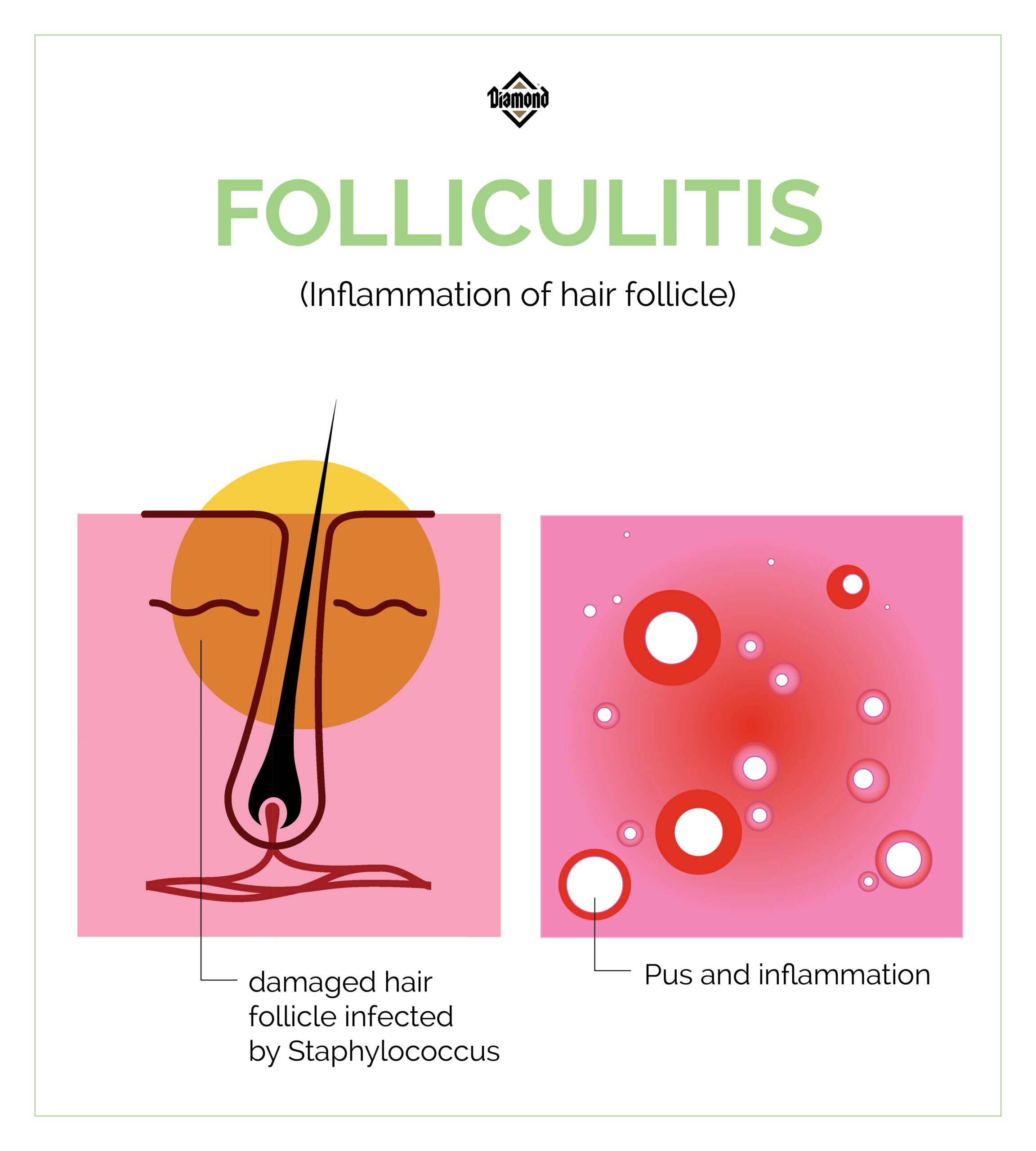Is your dog scratching and chewing nonstop? Do they have red bumps on their skin? They may have folliculitis, a relatively common skin condition that refers to inflammation within the hair follicle. Development of folliculitis usually occurs secondary to damage caused by another condition that the dog has, like allergies, endocrine disorders, external parasites (e.g., flea, ticks, mites), trauma or other skin disorders. Folliculitis can cause a variety of symptoms including redness, swelling and patches of skin without hair (alopecia), although the symptoms can differ between breeds.1

Superficial Bacterial Folliculitis
Folliculitis can be due to many different causes, but bacteria are often involved. When a hair follicle is compromised, an overgrowth of the bacteria that are normally present in skin can occur. If confined to the superficial portion of the hair follicle, this is referred to as superficial bacterial folliculitis. As the hair follicles become infected with bacteria, itchy red bumps or pustules (puss-filled pimples) on the dog’s skin may appear.
Superficial bacterial folliculitis occurs in dogs more than any other mammal and it’s usually caused by Staphylococcus pseudintermedius, a normal inhabitant of dog skin.1
Treat Folliculitis and the Underlying Cause
If you suspect your dog has folliculitis, schedule a visit with your veterinarian. They will take a detailed history, perform a physical examination and will look for other skin conditions like mange, ringworm or allergies that may have contributed to the development of folliculitis.
Once the primary cause of the folliculitis is determined, your veterinarian will prescribe the appropriate treatment. Bacterial folliculitis is typically treated with topical and/or oral antibiotics, while antifungals and parasite treatments may be needed in other cases. Medications, including medicated baths, can also be used to help control the inflammation. Your veterinarian will also discuss treatment for any underlying health conditions that may have played a role in the development of folliculitis. They may also suggest switching to a food formula specifically for dogs with sensitive skin, like Diamond CARE Sensitive Skin Formula for Adult Dogs.
References
- Bloom P. Canine superficial bacterial folliculitis: Current understanding of its etiology, diagnosis and treatment. Veterinary Journal. 2014;199(Feb 1):217–222.
RELATED POST: The 12 Lumps (and Bumps) of Canine Skin








